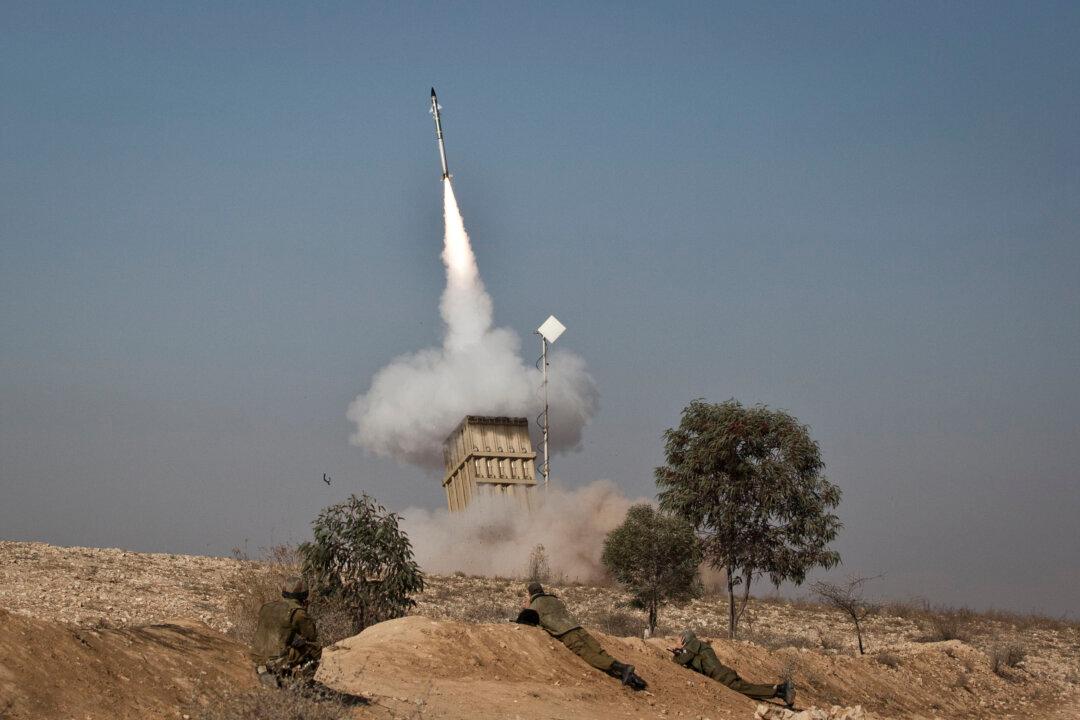The United States is sending Patriot missiles to Ukraine. This is great news. Anti-missile (i.e., “anti-ballistic”) missiles are one of the greatest defensive military inventions of the 20th Century. When I think of the Patriot missiles, I think about how they helped protect Israel during the first Gulf War. While they weren’t as effective as hoped, they demonstrated that the technology was possible and the effectiveness could be improved. Eventually, the technology was improved by the Israelis to implement Iron Dome, the system that has protected Israeli towns and its citizens from thousands of rocket attacks for more than a decade.
When I think of Patriot missiles, and Iron Dome, I also think of President Ronald Reagan, who proposed the Strategic Defense Initiative (SDI) on this day, March 23, 1983, as a comprehensive ground-based and space-based system to protect the United States from attack from nuclear missiles by destroying them in flight. It’s important to reflect back on the reaction of the liberal commentators, mainstream news outlets, and universities, to Reagan’s proposal, which they derisively called “Star Wars.” It’s a lesson just as valuable today that we should never blindly trust the politicians, the media, or “the science.” As Reagan famously said: “Trust, but verify.”
When Reagan proposed SDI, I was a student at Stanford University, having just received my master’s degree in electrical engineering and contemplating my future. Stanford was a place that proudly declared that their professors, students, and alumni could make the impossible possible. No challenge was beyond the abilities of the “geniuses” who attended and taught there. We were told constantly not to give up on our crazy ideas. This was where breakthroughs were developed, and often commercialized, in the areas of electronic networking, genetic engineering, and artificial intelligence. This was where the professors included the co-inventor of the laser, the co-inventor of the transistor, one of the first developers of computer algorithms, a pioneer in artificial intelligence, the inventor of the birth control pill, and too many more to list. This was where the students had developed new technologies and created entire industries, including the founders of Hewlett Packard, Cisco, Google, and hundreds more. This is where bleeding edge technologies like quantum computing and string theory are studied and refined today (despite little or no progress in decades).
And yet the “progressive” professors and students laughed at SDI and protested funding for it. One professor’s analysis, circulated widely, was a “mathematical proof“ that SDI couldn’t possibly work. In today’s words, he might say: “We must follow the science, and I am the science.”
His argument went like this. If Russia shot 10 nuclear missiles at the United States, and SDI had a “ridiculously” high accuracy of 90 percent, then one missile would get through and destroy us all.
Mathematically, this is nonsense, but it sounds convincing to someone who knows little about math. Or technology. Or military strategy. Or diplomacy. Or foreign relations. Yet this nonsense came from a Stanford professor. This calculation has so many obvious flaws, that it’s hard to address all of them. First, Israel’s Iron Dome system, though admittedly different technology than that proposed by SDI, shot down 84 percent of incoming missiles during the Gaza War of November 2012. And improvements have been made since then, so 90 percent accuracy is not ridiculous.
Second, despite the claims of “peace groups” that would prefer the destruction of our civilization than any war whatsoever, even a justified defensive one, a single nuclear bomb on a major U.S. city would cause horrendous destruction, but it is survivable. I would prefer a situation where 9 out of 10 nuclear weapons were destroyed mid-flight and one escaped, rather than having 10 nuclear bombs dropped on 10 American cities. That seems like a completely rational thought.
Third, any advanced systems are redundant so that if one system doesn’t work, we don’t simply walk away and give up. Just like the braking system in your car, flight systems in airplanes, and banking systems on the Internet, any military defense system would have redundancy to ensure greater reliability.And perhaps most important, the SDI system became the greatest bargaining chip in Reagan’s possession for negotiations with the Soviets, who were deeply afraid that they could never have the resources or technology to create their own defensive shield, thus rendering their entire nuclear weapons arsenal useless.





